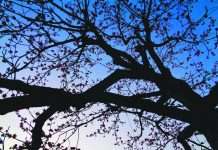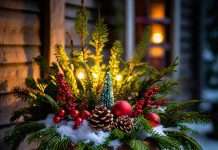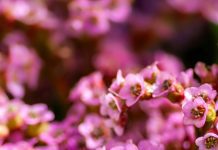How familiar are you with your neighbourhood pollinators? Do you know how to attract them to your yard? Here in Canada, we have five main pollinators1:
- Beetles
- Flies
- Wasps
- Butterflies and Moths
- Bees
This article focuses on providing food to attract bees and specifically native bees. However, other pollinators will likely be attracted as well.
Supporting native bee species is a bit different than managing honeybees. Beekeepers can place a managed honeybee hive in a convenient location (with some restrictions). The bees are directly introduced into their new home. Native bees, however, need to be enticed. The first step in this process is to provide a proper habitat to attract them. Good food and water sources can go a long way in attracting pollinators.
Bees need both nectar and pollen for survival. Pollen, which consists of small grains and carries the male reproductive cells of the plant, provides a source of protein and fats. Nectar is a sugar-rich liquid produced by plants to encourage pollination. Foraging bees use this as a source of energy2. Honeybees also turn nectar into honey. Some bee species are specialists relying on a single type of flower to survive while others are generalists. Bumblebees, for example, are generalists. They tend to be attracted most to blue or violet flowers although they will visit other flowers as well3.
In planning your garden with pollinators in mind, it’s important to have food available all season. Crocuses, for example, are an early source of pollen. Echinachea provides pollen and nectar late in the season. Plan your garden to include plants that bloom throughout the season. Colour variety can also entice a variety of pollinators to frequent your yard. Heirloom and native plants have excellent nutritional value for pollinators. Native plants are also well suited to our climate.
Some plants you may consider for your garden include:
- Crabapple (early season)
- Foxglove (early season)
- Willow (early season)
- Catnip (mid-season)
- Chives (mid-season)
- Lavender (mid-season)
- Borage (late season)
- Coneflower (late season)
- Cosmos (late season)4
Creating a pollinator-friendly garden can be a fun and rewarding challenge. If you’re just getting started, try one or two new plants and observe the changes in your pollinator population. Happy gardening!
1http://publications.gc.ca/collections/collection_2014/aac-aafc/A59-12-2014-eng.pdf
2https://davidsuzuki.org/queen-of-green/create-pollinator-friendly-garden-birds-bees-butterflies/
3http://www.hww.ca/en/wildlife/invertebrates/bumble-bees.html
4https://davidsuzuki.org/queen-of-green/create-pollinator-friendly-garden-birds-bees-butterflies/









